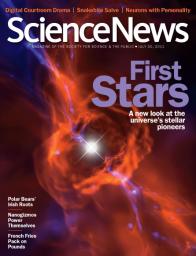AMD 16-core CPUs now shipping
AMD just announced that their 16-core Opteron "Interlagos" processors are now in production. First they will be shipped to retailers for testing in their platform, and then later in Q4 they will be available to the public. This is great news for the group because our new 512-core cluster will be based on the Interlagos … Continue Reading ››
 Let's start out the news feed with something big. A fantastic rendering of one of our simulations made the July 30th
Let's start out the news feed with something big. A fantastic rendering of one of our simulations made the July 30th